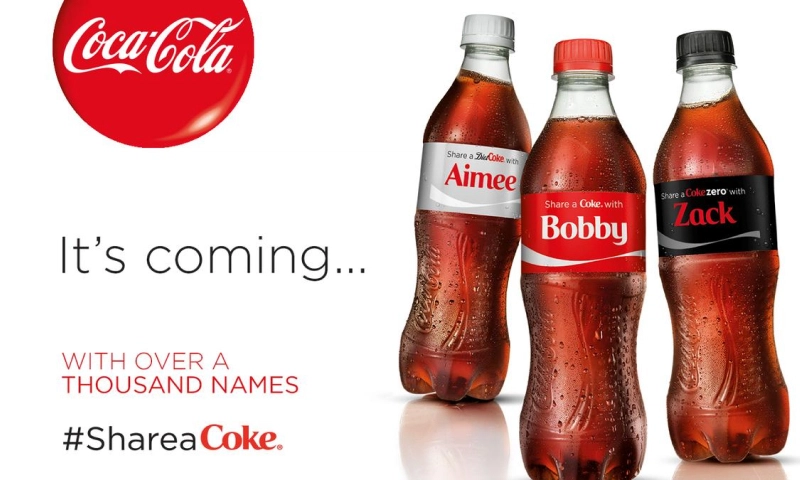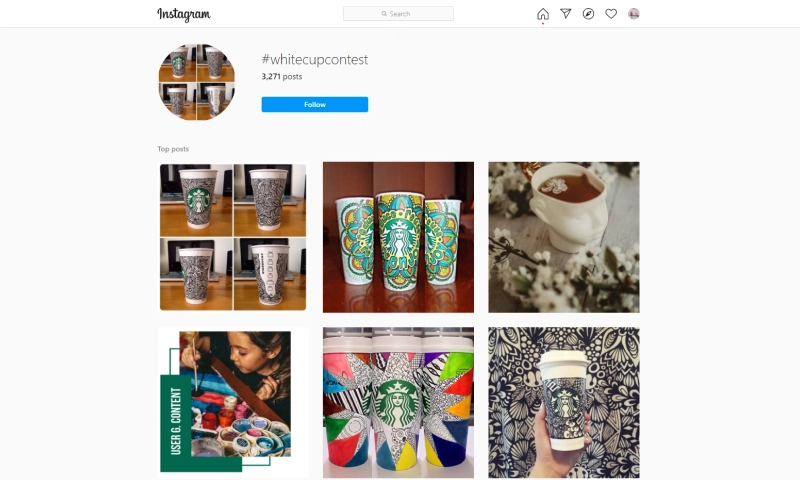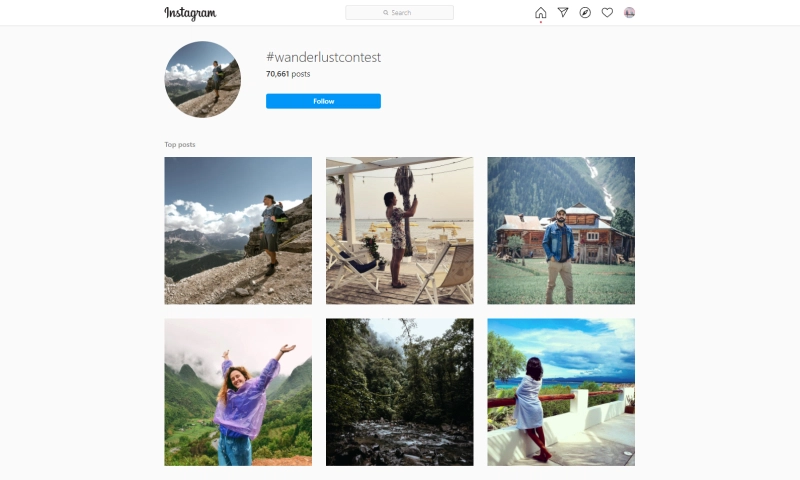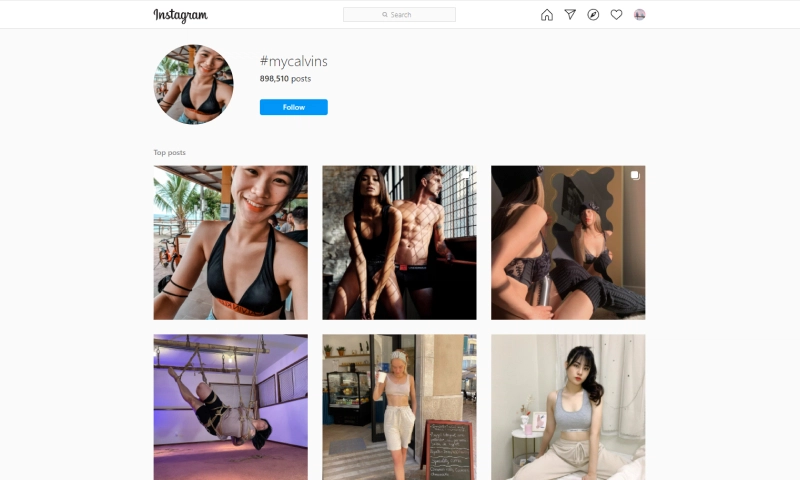UGC is used across all stages of the buyer’s journey to influence engagement and increase conversions. In addition to social media, customer-centric content can be used on landing pages, emails, and checkout pages.
There is fierce competition for audience attention today, and brands must fight to be seen online. The result is that buyers are more selective about the brands they interact with and purchase from, especially Gen-Z, who are notoriously fickle.
Consumers aren’t the only ones who are passionate about authentic content. Authenticity and quality are equally important elements of successful content, according to 60% of marketers. UGC from your customers is the most genuine type of content.
Beware of fake user-generated posts and campaigns. Audiences will quickly spot false sentiment, severely damaging your brand’s reputation. UGC should come from one of three cohorts: customers, brand loyalists, or employees.
UGC is modern-day word of mouth because people trust other people.
In addition, consumers view user-generated content as 2.4 times more authentic than content created by brands, so now is the time to invest in social marketing strategies that emphasize authenticity.
Abbreviation
What does UGC stand for in marketing?
What is UGC marketing?
Consumer-generated content (also known as UGC or user-generated content) refers to content related to your brand created by someone who is not an official company representative. Many types of content include social media updates, reviews, videos, podcasts, and more. Your brand’s user-generated content is anything that doesn’t originate from your employees or affiliates.
90% of consumers say it influences their buying decisions more than promotional emails and even search engine results, according to a TurnTo Networks study.
Past campaign results suggest they’re right. Several key performance metrics can be impacted by user-generated content – both positively and negatively. Because of this, it’s essential to know how to earn and use it.
Examples
The following blog post describes user-generated campaigns that increased brand awareness and built valuable customer relationships.
Your company will get a lot of attention this way.
1. Coca-Cola “Share a Coke.”

2. Apple “Shot on iPhone.”

3. Starbucks “White Cup Contest.”

4. National Geographic “Wanderlust Contests.”

5. Calvin Klein “MyCalvins Campaign.”

Increasingly, consumers are seeking more than just ads with community-driven marketing. Participating in activities outside of traditional advertising allows them to feel part of something authentic and meaningful.
Types of User-Generated Content
User-generated content can be extracted from a variety of sources. Brands can leverage the UGC stack of many dynamic platforms for advertising purposes. In this section, we have outlined the essential types of user-generated content.
Generally, UGC comes in three forms: text, images, and videos. This blog bifurcates UGC in a more deciphered way.
- Social Media Content.
- Testimonials and Reviews.
- Video Content.
- Branded Hashtags.
- Surveys.
- Online Events.
Benefits of User-Generated Content
Brands use various types of user-generated content since UGC is the most authentic and reliable content on the web and helps the brands to grow and sell more merchandise.
In addition to being excellent social proof, user-generated content also serves as a great marketing tool. Your credibility increases when you see content from genuine customers. In addition, customers or audiences expect brands to keep specific promises.
Listed below are some advantages and benefits of using user-generated content over branded content.
- Listen to what your customers have to say.
- Establishes a legit advertising base for the brand.
- Enhances trust in the brand and its products.
- Establishes a strong relationship between the brand and the user.
- Brands can be humanized through user-generated content.
- The most critical aspect of Word-of-Mouth marketing is word-of-mouth advertising.
- Establishes credibility and reliability.
- Brand authenticity is increased.
- Increases sales and conversions.
Brands can cater to their customers’ growing needs by using user-generated content.
A brand’s marketing strategy must include user-generated content (UGC) to turn it into a profit-making scheme.
How To Get User-Generated Content And How To Use It In Marketing Strategy?
According to a survey, users are more likely to trust visual user-generated content (UGC) than brand photos or videos. Therefore, content marketing gold is user-generated content.
However, businesses do not know how to encourage their fans to create user-generated content, even though customers trust it more than brand content.
Only 16% of brands provide guidelines for creating reviews or other content, according to more than 50% of consumers.
Assume the following:
Boost Your Brand’s Visibility
Fans need a reason to talk about your brand on social media if you want them to do so.
Coca-Cola’s “Share a Coke” campaign is one of my favorite ways to generate social buzz.
Social media contests/quizzes
Encourage your fans to create UGC by running contests/quizzes on social media.
Dove, for example, asked their Facebook fans to share why their friends ‘represent natural beauty’ to help promote their ‘Real Beauty’ message. Fans were asked to list two things that make their friends beautiful, as well as the names of their friends.
Fans responded enthusiastically to the campaign.
Use hashtags to your advantage.
When used strategically, hashtags can help spread the word about your promotion and are especially useful on Twitter and Instagram.
In the #PutACanOnIt social media campaign, Red Bull won the Shorty Award for the best campaign.
Offer Rewards
You can also encourage your fans to create more UGC by rewarding or acknowledging them for their contributions. A small gesture of appreciation, such as sharing their content on social media, can make a big difference. You don’t always have to hand out cash rewards or discount coupons – even small gestures can make a big difference.
Ask Questions
Your fans may create content if you ask them questions, but you have to be smart about this, as not all questions on social media receive answers.
How should you ask questions?
Ask your customers about how your products have simplified their lives or about their personal experiences with your brand.

